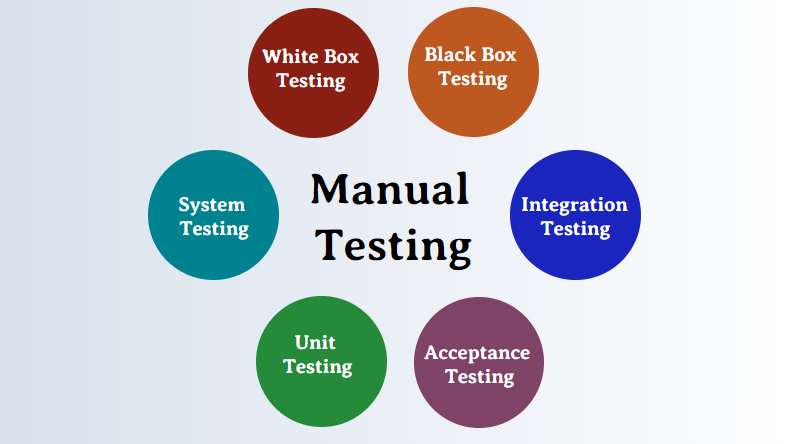
In the complex domain of software testing, manual testing methods assume a crucial role in guaranteeing the functionality, reliability, and user satisfaction of applications. Grasping and utilizing a varied set of manual testing methods is essential for testers to adeptly navigate the intricacies of the software development lifecycle. This blog acts as a comprehensive guide, delving into various manual testing methods and their applications in ensuring the delivery of high-quality software.
Black Box Testing:
Overview:
Black box testing centers on assessing the functionality of the software without delving into its internal code structure.
Application: This approach emulates end-user interactions, ensuring that the software behaves as anticipated and aligns with specified requirements.
White Box Testing:
Overview: White box testing mandates a thorough comprehension of the internal code structure.
Application: Testers employ this method to evaluate internal logic, control flow, and data flow, pinpointing issues related to code execution and integration.
Grey Box Testing:
Overview: Grey box testing integrates elements from both black box and white box testing methodologies.
Application: Testers with partial knowledge of the internal code utilize this method to strike a balance between user-centric testing and code validation.
Acceptance Testing:
Overview: Acceptance testing validates whether the software meets specified acceptance criteria and is prepared for deployment.
Application: It encompasses User Acceptance Testing (UAT) and Operational Acceptance Testing (OAT) to guarantee alignment with business and operational requirements.
Regression Testing:
Overview: Regression testing involves re-testing the software after changes to guarantee that existing functionalities remain unaffected.
Application: This approach guarantees that new developments or modifications do not introduce unintended side effects or disrupt existing features.
Smoke Testing:
Overview: Smoke testing validates the stability of critical functionalities after a build or substantial changes.
Application: This practice ensures that a new build is dependable and prepared for more extensive testing.
Exploratory Testing:
Overview: Exploratory testing is an unscripted approach where testers actively explore the software to identify defects.
Application: This method proves effective for uncovering unexpected issues, particularly in scenarios where test cases may not encompass all possible situations.
Usability Testing:
Overview: Usability testing concentrates on assessing the software’s user interface, user experience, and overall usability.
Application: Its objective is to ascertain that the software is intuitive, user-friendly, and aligns with the expectations of end-users.
Conclusion
A comprehensive testing strategy entails the strategic utilization of diverse manual testing methods, each catering to specific aspects of the software development lifecycle. Black box testing assures alignment with user expectations, white box testing delves into the intricacies of code execution, grey box testing strikes a balance, and acceptance testing ensures adherence to business requirements.
Regression testing serves as a safeguard against unintended consequences, smoke testing ensures stability in builds, and exploratory testing uncovers the unexpected. Ultimately, usability testing places emphasis on delivering a positive user experience.
By comprehending and integrating these manual testing methods into the testing process, development teams can confidently navigate the intricate landscape of software testing. This approach ensures the delivery of software that not only meets functional requirements but also delights end-users with its reliability and usability.
Digital Marketing Manager at Cotocus